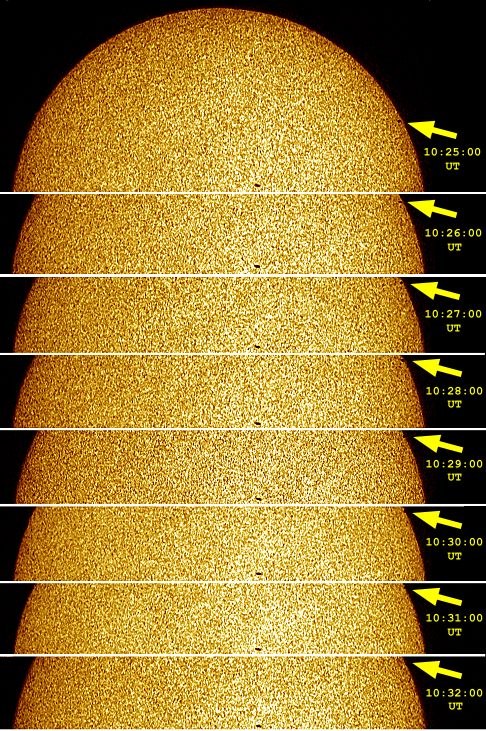
Aside from being the closest planet to the Sun, Mercury is only second to distant Pluto in being the smallest planet of our solar system. It rotates completely around the Sun once every 88 days and has such a slow rotation about its axis that a day on Mercury is greater in length than its year (ie. time required to orbit the Sun). The proximity of Mercury to the Sun is responsible for its characteristic surface which is completely covered with craters, for the immense gravitational force of the Sun attracts many comets and asteroids which inevitably also crash into Mercury due its close proximity to the Sun. At aphelion, Mercury reaches a temperature of 285°C whereas during perihelion it surpasses 430°C (7.5x the greatest temperature ever recorded on the surface of the Earth: 57.7°C, Lybia, Sept 1922). In contrast, the temperature at night reaches -180°C due to the absence of any atmosphere. The only satellite mission to Mercury was Mariner 10 which made three fly-bys between March 1974 and March 1975 when it photographed half its surface. One of the most dominant features encountered by Mariner 10 is a plateau measuring 1300 km in diameter and is most probably due to an impact from a 100-km wide asteroid travelling at 500,000 km per hour.
|
Body: Mercury Mean Distance (A.U.): 0.387 Equatorial Diam (km): 4,878 Mass: 0.06 x Earth Volume: 0.06 x Earth Orbital Period: 87.969 days Number of Moons: 0 Orbital Eccentricity: 0.206 Orbital Inclination: 7.0° Albedo: 0.11 |
 |
Date: May 07, 2003 13:25:00 - 13:32:00 UT+3 Location: Athens, Greece Equipment: Celestron 14" SCT Losmandy G-11 Baader ND5 Filter (off-axis) TeleVue Pronto Refractor Nikon Coolpix 995 ScopeTronix SWA14 Adapter Coronado SolarMax 60/BF10 Exposures: 1/125th sec @ f/4.1 ISO 100 RGB TIFF image format 2048x1536 image size 60 secs between exp Software: CCDSoft V5 CCDSharp V1.1 Photoshop V6 Processing: Fast Fourier Transform Linear Stretching L.-R. Deconvolution Levels Unsharp Masking Alignment Layers (RGB) |
